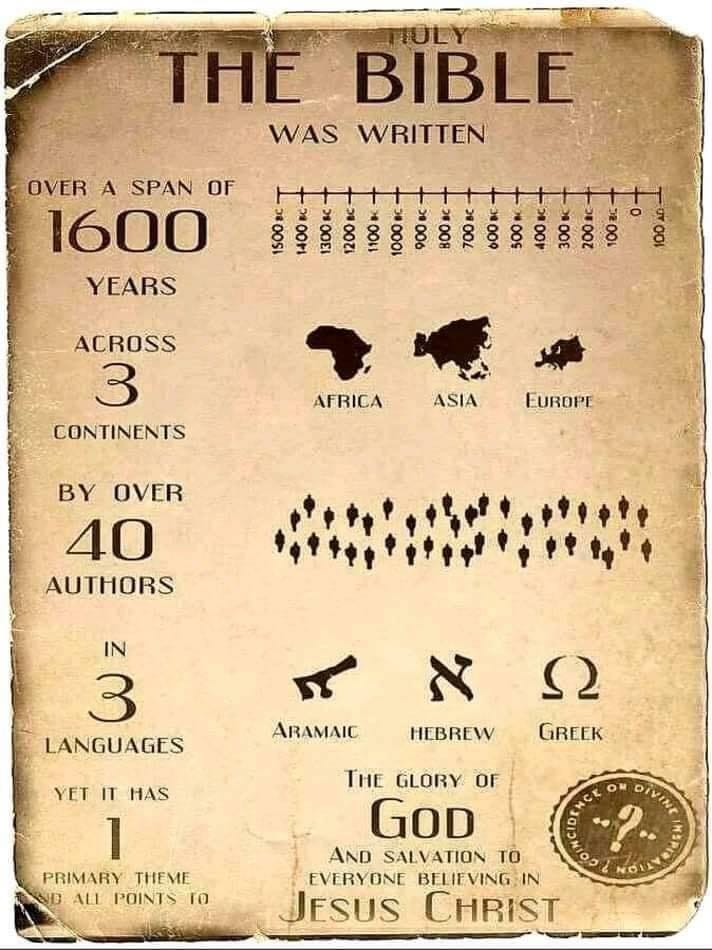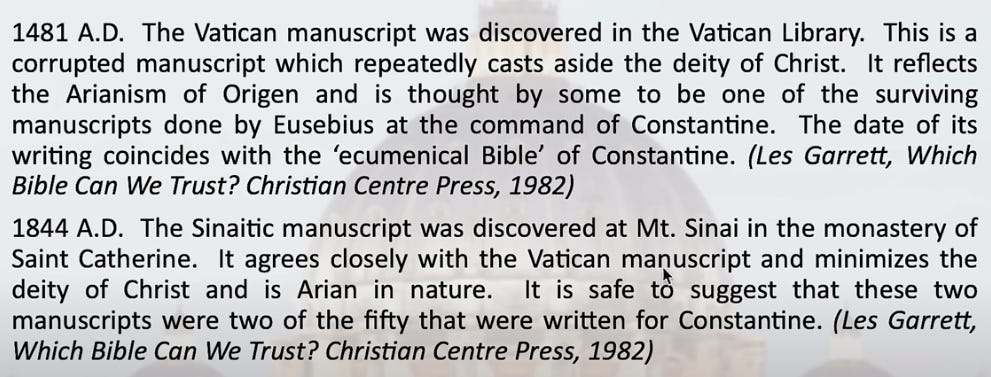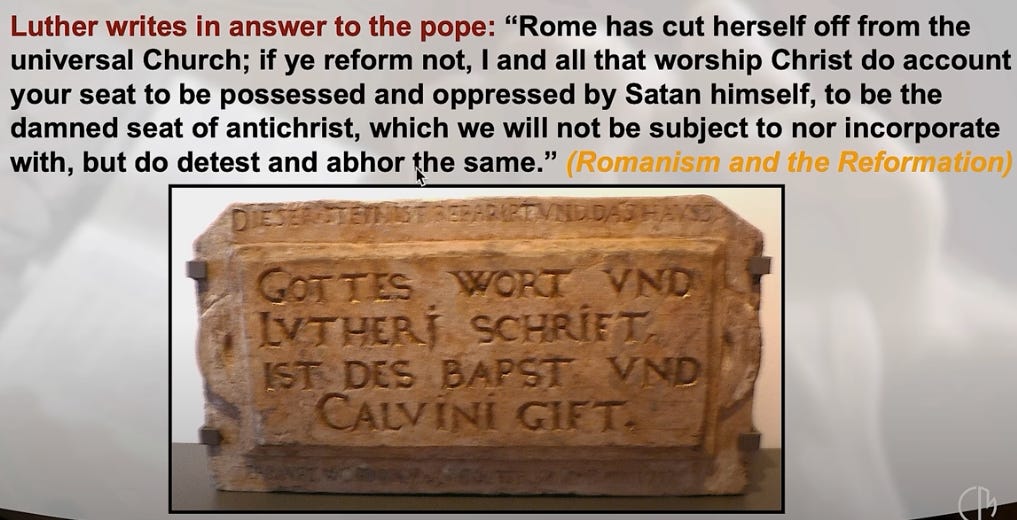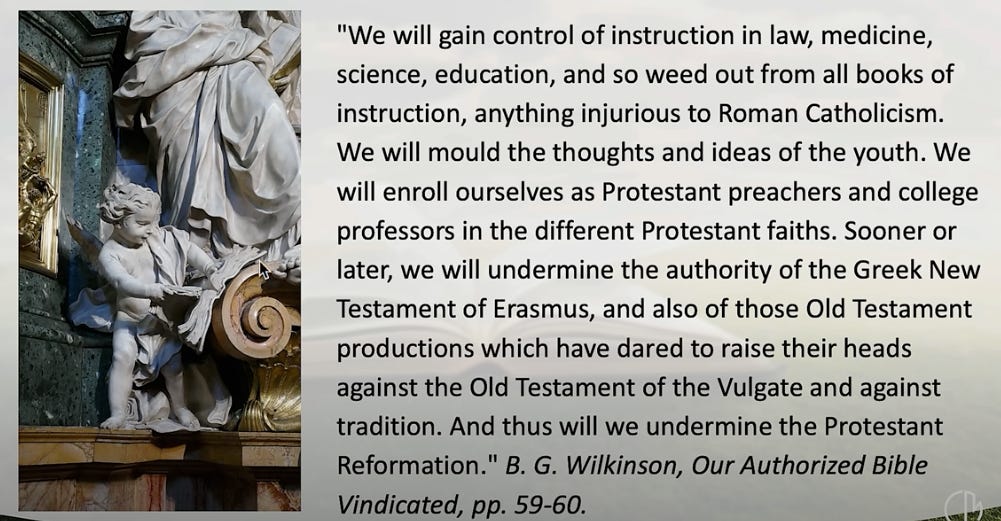Religious 7: Which Bible?
Eph 5:11:"…have no fellowship with the unfruitful works of darkness, but rather reprove them.”.
Amos 3:7 “…God will do nothing, but he revealeth his secret unto his servants the prophets.”
Why this post?
To provide evidence of which Bible is accurate and which have been edited.
Introduction
Before I continue with prophecy, I thought to point out that there is some controversy when it comes to which Biblical translation is the most accurate.
Several authors have written volumes on the origins of the Bible, the different versions, its integrity, the content and more. Below is a summary of the main lines of original texts that lead to the number of editions we have today.
Below follow a few evidences that should lead you to also conclude that the King James Version (KJV) is the most accurate and why they burnt Bibles.
Bible statistics
And some fun facts:
Best selling book;
Most stolen book;
185 songs;
Shortest verse: “Jesus wept”;
Kickstarted the printing press.
Consider the insightful comment from a well known scientist bottom right:
The lines
Several authors offer various visual representations of the Bible lineage, but this one sums it up fairly well:
The original manuscripts are lost and thus it becomes a matter of which copies reflect the original texts the best, which means we’re back to weighing the evidence.
A very detailed chart of the lineage is available at the bottom from this site. PLEASE NOTE that some key information is not elaborated.
There really is just two lines. Those on the outside lead to spurious versions and the centre does not, but let me provide the evidence.
Codex (plural, Codias) consisted of gatherings, or groups, of pages sewn through the fold along one edge and bound together.
Historical evidence for the left and right lanes
I’v decided no to cover the history in any detail. There are several good sources available and let’s consider the work we have in the hands of the populous today. Before I do that, let me note a few basics:
Around 400BC the Old Testament was complete;
Around 100AD the New Testament was complete;
Only later was the Apocrypha written;
Codex Aleph, also known as the Sinaiticus or Sinai Bible dates back to the 4th Century and only covers the New Testament;
Codex B also known as Codex Vaticanus, now kept at the Vatican, shared the same writing style of, what it seems, two or three scribes and it does not contain all the books;
Both the Sinaiticus and Vaticanus included Apocrypha which does not align at all to the Old and New Testament;
The Vatican declared the Latin Vulgate as infallible;
Wycliffe produced the first true English Bible but it was based on the flawed Vulgate; and
Douay/Rheimes Bible was the first Catholic English Translation.
Many recent Bibles are translated from the Westcott and Hort text riddled with manipulation:
Brief history of the centre lane
This lane’s origin is often referred to as the received text or Textus Receptus which are translations from mostly Greek origins.
Several copies have been found. The sheer volume is significant. These copies are in harmony, many letters quote directly from it.
Politically, the Turks invaded several countries around the Mediterranean causing Greek scholars to flee to Europe. This is when the works fell into western hands.
Erasmus produced a parallel Greek / Latin Bible and may have helped Martin Luther produce the first German NT which lead as the basis of Danish & Swedish translations.
Seven times
There were seven waves of attempts to translate the original Greek into English:
William Tyndale, in 1525, published the New Testament. Genesis through 2 Chronicles and Jonah were translated, but published separately, not as a Bible. Tyndale translated as much as possible from the Greek and Hebrew rather than the Latin as Wycliffe did (Wycliffe's translation was not a purification as it was translated solely from the corrupted Latin Vulgate).
He was hunted by the establishment, strangled and burnt at the stake in 1537 - sounds like the apostles.
Myles Coverdale, in 1535, published the first complete English Bible. Coverdale built on Tyndale's work yet translated also from the German and Latin, but not completely from the original languages. Coverdale and Tyndale at times worked on this translation together.
John Rogers, in 1537, (using the pen name of Thomas Matthew) published the Matthew Bible, which combined the best of Tyndale's and Coverdale's work.
Burnt at the stake.
The Great Bible, of 1539, was completed by Myles Coverdale—and called great because of its large size. This Bible used Tyndale's unfinished Old Testament books which were translated from the Latin Vulgate and German translations rather than original the Greek and Hebrew. The Great Bible was also called the Whitchurche Bible after its first English printer, the Cromwell Bible after the one who prepared it for publication, the Cranmer Bible after the preface by Cranmer, or the Chained Bible since it was chained in a convenient place for people to read in the churches.
The Geneva Bible, of 1560, was the first Bible to be translated completely from the original text. William Whittingham, Myles Coverdale, Christopher Goodman, Anthony Gilby, Thomas Sampson, William Cole, John Knox, and John Calvin participated. It was very popular because it was a study Bible with maps and cross references, and was small enough to be used for home study.
Contains hardly flattering comments about the Catholic Church;
If you have one that you want to donate, please contact me.
The Bishops' Bible, of 1568, was translated by Matthew Parker, Archbishop of Canterbury, and his fellow bishops. Because there was no supervisor, the translation practice varies greatly from book to book. They also removed the Calvinistic marginal notes of the Geneva Bible.
The King James Version of 1611, was the seventh purification — God's promise to preserve his pure Word.
Probably dismissed by most as pure chance, but note this verse:
Psalms 12:6-7 King James Version (KJV)
The words of the LORD are pure words: As silver tried in a furnace of earth, purified seven times. Thou shalt keep them, O LORD, Thou shalt preserve them from this generation for ever.
The King James Version
The King James Version (KJV) of the Bible, published in 1611, was translated under the direction of King James I of England.
The translation process took around 7 years and aimed to produce an authoritative and scholarly version in the vernacular English language based on the original Hebrew and Greek texts, while also preserving the familiar ecclesiastical words and style of earlier English translations.
King James appointed a committee of around 50 scholars and linguists who were divided into six groups based at Westminster, Cambridge, and Oxford.
The translators relied primarily on the Masoretic Hebrew text for the Old Testament and the Textus Receptus Greek text for the New Testament.
The translators followed specific rules, including instructions to follow the Bishop's Bible closely and only depart from it when the original Hebrew or Greek permitted it. They were also instructed to retain ecclesiastical words like "church" and to consult Jewish scholars on the translation of Hebrew texts.
The older translations like Tyndale's, Matthew's, Coverdale's, and the Geneva Bible were to be used and followed when they agreed better with the text than the Bishop's Bible.
The proper names of the Hebrew were to be retained as far as possible.
No marginal notes were to be added explaining the text.
Each book went through a rigorous review process involving all six groups. One group would translate a book, and the others would review and cross-check it against the original languages and other translations.
When any company disagreed over the rendering of a word or passage, it was to be noted and referred to a general committee.
After the entire Bible was translated and reviewed by all groups, two members from each group met as a final committee to review and agree upon the unified version to be published.
The KJV included extensive notes, prefaces, and other reference materials aimed at aiding study and understanding of the text.
The T and the Y
Many argue that the text is hard to read but then again details such as the use of T in Thee is singular and Y in Ye is plural.
A word on Luther
Luther was instrumental in breaking away from the spurious versions of the Bible and Christianity. The following stone reflects Luther’s position:
God’s Word and Luther’s writings are poison to the pope and Calvin.
Bible differences
Changes range from removal of words, to sentences to entire verses. Let’s take the example from above (Psalms 12) and compare a few versions:
KJV obviously refers to preserving the Word for us. But that’s changed to preserving us, to him (no capital), to the oppressed. How does that convey the same message? The meaning utterly lost in translation. Let’s consider few more from the New Testament:
Some are missing entirely, and witness the attack on Jesus Christ:
Here’s a brief video on the matter by Kent Hovind:
And this list goes on.
This is intentional!
Surely it can’t be intentional? Well, consider the quote below:
It is a literal attack on the Protestant movement.
What do you think is this little angel doing? It’s tearing apart His Word.
Bible lineage in detail
Here’s a very detailed history of the various versions as they arose from the different source languages:
Museum of the Bible
So the day you visit the Museum of the Bible in Washington, please remember which version to check out. See this reviewers comments here.
If buying old Bibles is your thing. First edition of the KJV for $150,000.
whydoneit?
Why would they change the text? I think their own words said it all.

















